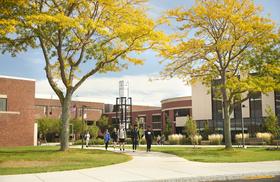A new study finds that a growing number of adjunct professors could be contributing to low completion rates at community colleges across the state of Massachusetts. The study, which was conducted by the Massachusetts Teacher Association, failed to make a direct correlation between adjunct faculty and low completion rates. However, those involved in the study, as well as others in the community college population, agree that adjunct professors simply don’t have the time or resources to help students succeed the way full-time professors can.
More Adjunct Faculty Seen Statewide
The study, titled, “Reverse the Course: Changing Staffing and Funding Policies at Massachusetts Community Colleges,” found that less than one-third of courses taught at community colleges in the state are taught by full-time faculty members. According to the MTA website, that number has been steadily declining since the 2004-2005 school year, when it was 34%. Today, that number is more like 28%.
During the same time, the study found that only around 17% of students enrolled in community colleges across the state successfully completed their degree programs. The dismal number was limited to first-time community college students who failed to earn a two-year degree within three years. Researchers attributed the low rates to a growing number of adjunct faculty members.
“This practice of failing to expand the state-funded faculty in favor of Division of Continuing Education (adjunct) faculty contributes to the problem of low student outcomes,” the report was quoted as stating at the Telegram.
This video explains why adjunct faculty struggle to make ends meet.
Benefits and Drawbacks of Adjunct Faculty
The primary reason community colleges - and other institutions of higher education - have for increasing the number of adjunct professors is cost. These faculty members are considered part-time employees, which means they are not entitled to costly benefits like the full-time staff. In addition, pay rates for adjunct professors can be lower, without sacrificing instructional quality in many circumstances.
The primary difference between full-time and adjunct faculty as it relates to student outcomes appears to be the time and commitment full-time professors bring to the community college campus. Full-time staff members are expected to hold regular office hours for students and provide much-needed academic advising to a student body that often requires additional support. They also serve on campus committees and become visible, active members of the campus environment.
“Community college students often have significant financial and academic needs, and many of them are the first in their family to go to college,” Joseph LeBlanc, president of the Massachusetts Community College Council, stated on the MTA website. Many of them need a lot of guidance to stay on track through graduation.”
Unfortunately, adjunct faculty are rarely given the resources or even the office space to assist students outside class time. Most are simply required to make themselves available to students by appointment, rather than holding regular hours when students can come in and talk to them. Even adjunct faculty members that are brilliant in the classroom simply can’t match full-time staff members in terms of what they are able to offer students.
The problem with an increasing percentage of adjunct faculty can be seen at other levels of higher education, including four-year universities. However, the prevalence of this practice at community colleges has made adjunct staff more of an issue at this level. Currently, Massachusetts has 15 community college campuses throughout the state, serving more than 150,000 students in both credit and non-credit programs.
This video examines the five best and worst things about being adjunct faculty.
Is There a Correlation?
Despite the evidence suggested in this study that adjunct faculty may contribute to low completion rates, a definitive link between the two is relatively hard to come by. The study did find that at Greenfield Community College, where a whopping 40% of the faculty is full-time, the completion rate at the school is higher than the state average at 22%. The president of GCC, Robert Pura, told the Gazette he believes there is a direct link between full-time professors and their increasing completion rates.
“Do I believe that the number of full-time faculty matters to quality of experience? Absolutely,” Pura stated. “Our faculty are wonderful writers and poets and scientists and artists and nurses and police officers who identify themselves first and foremost as teachers, and that matters.”
Pura also admitted that as money became tight at GCC in recent years, the college made the choice to make cuts in other areas, rather than replacing full-time staff with adjunct professors. The school has boasted a full-time faculty number between 59 and 62 over the past 15 years, no matter what current economic conditions dictated.
This video reports on the low pay of adjunct faculty.
Recommendations by the Massachusetts Teacher Association
In addition to their findings on the possible contributions of adjunct faculty to low completion rates, the MTA study made the following recommendations:
- Community colleges in the state should use additional funding coming in 2014 to hire more full-time faculty members
- More research should be done on the impact of adjunct faculty to low student completion rates
- State lawmakers need to continue increasing funding to institutions of higher education in the state, including community colleges, to accommodate increased hiring of full-time professors
While the recommendations may be applauded by community colleges across the country, the bottom line often boils down to the bottom line. When money is tight, it can be very challenging - even impossible - for schools to maintain the full-time staff necessary to promote higher success rates. However, studies like this may prompt state lawmakers to increase public education budgets that would allow more community colleges nationwide to increase their full-time staff.
Questions? Contact us on Facebook. @communitycollegereview














